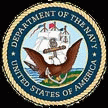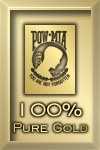







Name: Thomas Holt Pilkington
Rank/Branch: O2/US Navy Reserves
Unit: Fighter Squadron 154, USS CORAL SEA (CVA 43)
Date of Birth: 08 September 1941
Home City of Record: Morton Grove IL
Date of Loss: 19 September 1966
Country of Loss: North Vietnam
Loss Coordinates: 191700N 1054700E (WG788340)
Status (in 1973): Missing in Action
Category: 4
Aircraft/Vehicle/Ground: F4B
Refno: 0462
Other Personnel in Incident: Don B. Parsons Jr. (missing)
Source: Compiled by Homecoming II Project 30 June 1990 from one or more of
the following: raw data from U.S. Government agency sources, correspondence
with POW/MIA families, published sources, interviews. Updated by the P.O.W.
NETWORK 1998.
REMARKS:
SYNOPSIS: The USS CORAL SEA participated in combat action against the
Communists as early as August 1964. Aircraft from her squadrons flew in the
first U.S. Navy strikes in the Rolling Thunder Program against targets in
North Vietnam in early 1965 and participated in Flaming Dart I strikes. The
next year, reconnaissance aircraft from her decks returned with the first
photography of Surface-to-Air Missile (SAM) sites in North Vietnam. The
CORAL SEA participated in Operation Eagle Pull in 1975, evacuating American
personnel from beleaguered Saigon, and remained on station to assist the
crew of the MAYAGUEZ, which was captured by Cambodian forces in 1975. The
attack carriers USS CORAL SEA, USS HANCOCK and USS RANGER formed Task Force
77, the carrier striking force of the U.S. Seventh Fleet in the Western
Pacific.
One of the aircraft launched from the decks of the CORAL SEA was the F4
Phantom. The Phantom a multitude of functions including photo and electronic
surveillance. The two-man aircraft was extremely fast (Mach 2), and had a
long range (900 - 2300 miles, depending on stores and mission type). The F4
was also extremely maneuverable and handled well at low and high altitudes.
The F4 was selected for a number of state-of-the-art electronics
conversions, which improved radar intercept and computer bombing
capabilities enormously. Most pilots considered it one of the "hottest"
planes around.
LTJG Don B. Parsons was an F4B pilot and LTJG Thomas H. Pilkington a Radar
Intercept Officer (RIO) assigned to Fighter Squadron 154 onboard the USS
CORAL SEA. Historically, pilots from fighter squadrons have been associated
with dramatic duels in the skies, and have held the attention of aviation
enthusiasts and the public; a fondness dating back to the days of the
exploits of the Red Baron in World War I.
But Vietnam was largely an "air-to-mud" war. There were a considerable
number of air duels over North Vietnam and the exploits of MiG killers have
been well documented. But those aerial duels were only a minute part of air
combat in Vietnam. The bulk of naval air activity consisted of various
attack aircraft dropping bombs and firing rockets and bullets on the fields,
factories and bridges of North Vietnam. Fighter pilots, not wanting their
talents to go to waste, also flew air-to-ground missions.
On September 19, 1966, Parsons and Pilkington were assigned to a two-plane
night armed reconnaissance mission over North Vietnam. Parsons' aircraft
trailed the flight leader by about 4 miles. "Armed reconnaissance" meant
look for targets and destroy them--usually truck convoys or similar small
enemy targets.
Shortly after crossing the coast at 4,000 feet, the flight leader saw a
possible surface-to-air missile (SAM) launch approximately two miles
southeast of his position and near Thanh Hoa, North Vietnam. He called for
defensive maneuvers back to the coast, but Parsons did not respond. Although
no explosion was noticed, an A4C flight reported seeing an unexplained flash
on the ground in the general area of the missing aircraft.
[NOTE: U.S. Navy accounts give the lead aircraft position as two miles
northwest of the city of Thanh Hoa. Defense Department records list the loss
of Parsons and Pilkington at 191700N 1054700E, which is a full 25 miles
south of Thanh Hoa. If Parsons remained four miles behind the flight leader
and if he heard the call for defensive maneuvers, it seems unlikely that he
would have approached the sea on this flight path. No explanation can be
found for this discrepancy.]
Search and rescue efforts were made by helicopters and fixed wing aircraft.
These efforts were unsuccessful. Both Parsons and Pilkington were classified
Missing in Action.
Nearly 2500 Americans remain missing or otherwise unaccounted for in
Vietnam. Since the war ended, over 10,000 reports concerning missing
Americans in Southeast Asia have been received by the U.S. Government. Many
experts are completely convinced that hundreds of Americans are still held
captive.
One set of critics say that the U.S. has done little to address the issue of
live POWs, preferring the politically safer issue of remains return. Others
place the blame on the Vietnamese, for using the issue of POW/MIA to their
political advantage. Regardless of blame, no living American has returned
through the efforts of negotiations between the countries, and the reports
continue to pour in. Are we doing enough to bring these men home?
Both Parsons and Pilkington were promoted to the rank of Lieutenant
Commander during the period they were maintained missing.
